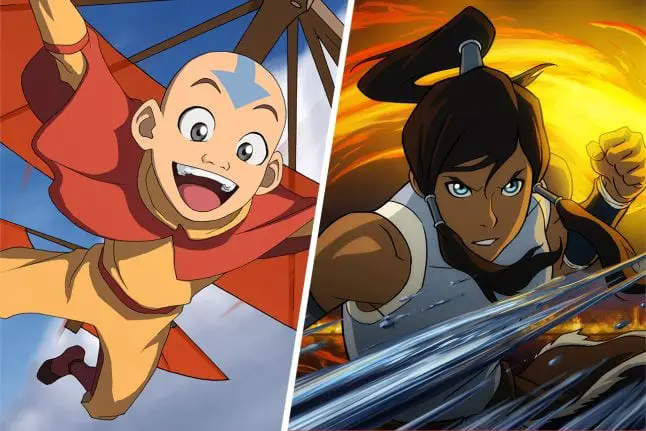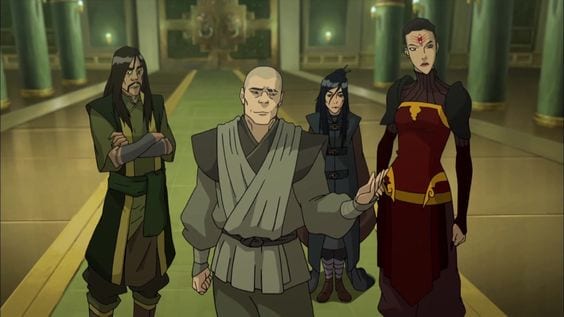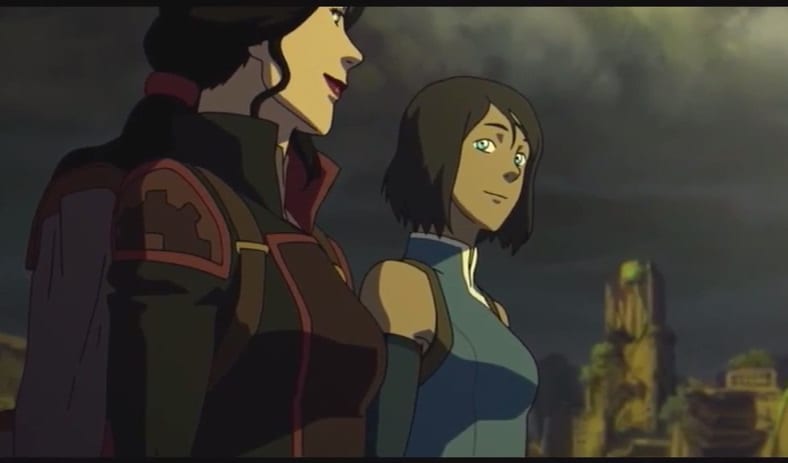The Legend of Korra is finally arriving to Netflix, and us lovelies at The Fandomentals are celebrating the occasion with KORRA WEEK. And although I’m excited to gush out my thoughts on the series, I find myself a little troubled in the attempt, because there is so much to say. Plot, character development, world building – these are all fertile grounds for discussion and analysis. That is, all aspects needing a much cooler head than mine at the moment. So, if I can’t really gush out my brains, I’ll gush out my heart (ew). Next to The Silmarillion, the duology of Avatar: The Last Airbender and The Legend of Korra have shaped the way I experience most mediums of entertainment forever.
But the latter a very special case, as it’s also nurtured the principles by which I practice my current craft as an aspiring digital artist.
“You are not me. And you should not be me.”
I always did arrive late at the party; I started watching The Legend of Korra when it was already two seasons in, and I had my misgivings. I considered then (and still do) that AtLA was a rare instance of a perfect show throughout its whole run. LoK had massive shoes to fill and nasty hurdles to overcome. It’d either be too derivative or just downright underwhelming. But I thought the show being renewed for another season was a good sign, so I went in as fearless and clear-headed as I could. Now, was there something substantial to my fears?
Yes and no. The first season, while enjoyable, felt a little rough. And yet, it never seemed to me like the show clung to the groundwork laid by AtLA. Rather, it built upon those foundations, unafraid of making changes. Check here for a more fleshed out comparison between the shows.

Korra was not Aang. Mako and Bolin were not Katara and Sokka. Republic City was not the Four Nations of old, but a progression of what that world could theoretically become. And more importantly, Anti-bending Amon was not Fire Lord Ozai. The conflict posed by the first season’s antagonist was an ethical and practical antithesis to the dynamic of the entire AtLA run. In retrospective, I see this creative direction as a somewhat rebellious stance towards Avatar: The Last Airbender. And maybe it was a necessary one. Moving past the shadow of a great elder is not always a gentle, peaceful process.
And this drive was taken to eleven on Season Two, which filled me with both heartbreak and wonder… and most of all, an uncertainty which had me excited for Season Three.
Actually, I’d eventually grow to appreciate these world-bending changes later in life. I would have never gotten so strongly into Hirohiko Araki‘s JoJo’s Bizarre Adventure, otherwise. Creative process should not be kept only a singular, unchanging direction. If no creator should feel obligated to depart from accustomed grounds, they should not feel afraid to explore what lies beyond. And to me, fresh out of the world-altering events of LoK Season 2, this felt like an encouragement to consider pursuing a new craft. Writing was my haven – a reliable place I thought as my only way of self-expression.
So everything changed, not when the Fire Nation attacked in an age long passed, but when I picked up a little sketchbook, and doodled away.
“I can feel it. Things will never be the same again.”
It would be a stretch of me to say that The Legend of Korra was my only major visual inspiration. But one thing that definitely has LoK‘s print all over it is my aim for diversity. In the show, this means a great deal of things; culture, worldview, even the very essential nature of the things you see. By itself, this implies a rich and colourful palette unfolding through the peoples that inhabit Republic City; and that’s not accounting for the spirits that join the landscape after Season 2. Beyond the confines of the city, there is even more to see, as the world built by AtLA remains.
However, there is one other kind of diversity that’s more nuanced and not as visible at first. That of the show’s main villains, which I feel are a definite upgrade from AtLA‘s Firelord Ozai. Amon, Unalaq, Zaheer, and Kuvira. They are each a different hue in terms of abilities and ethical perspectives. One might argue their common ground is how their principles could be laudable to a degree (not Unalaq, though), but are distorted by their zealotry. Each one in turn breaks free from the outdated, crusty frame of the generic villain in fantasy. And this manifests into how the show presents these characters visually, even being more eye-catching than the heroes themselves.

It is the four main antagonists who wear their history on their design. The art direction does not necessarily splurge on details, but it hardly needs to. You can practically get what the characters are all about at a glance, from the aggressively subversive to the stiff and militant. LoK, while not the first show to do this, is the one that taught me a good character design is more than a cluster of visual cues. The best characters hint at their depth through their presentation; their graces and imperfections are each a bit of narrative that informs the whole.
That is how each character in The Legend of Korra feels complete. Add that touch of contrasting worldviews that each character embodies, and you got something special. The antagonists are no longer simple obstacles for the hero to overcome – they’re now contending worldviews and values. “Hot takes” at a global scale that could bend or even break the world as we know it. With this variety in palette and depths, I find we’re no longer talking about a world, but a cosmovision.
“But I feel like I’ve only just begun. There’s so much more I want to learn and do.”
So far I talked about two important influences The Legend of Korra has had on me as a creator. Since all good things come in three, there is indeed a third one, not so much practical as slightly esoteric. The stories of AtLA and LoK function under the “Monomyth,” better known as the Hero’s Journey – a set of core processes and archetypes in western storytelling. You can see it described (and outrageously defied for comedy purposes) in a lovely video by Polygon here. But at its core the Hero’s Journey is a process of growth, adversity, and eventual triumph in the protagonist’s story arc.
Although Avatar Aang undergoes his own iteration of this journey, it is largely Avatar Korra on my mind when I think of my own journey. Early on, Korra has a stronger hold on her abilities than Aang, thus a lot of pride for it. However, her experiences on the ensuing seasons serve to humble her and shatter the walls around her perspective. This even goes as far as leaving her crippled in the latter half of the series. This is a defeat manifest in both body and spirit, exceeding the pain of any wound and confronting our hero with the greatest limitation an Avatar could encounter: impotence to keep up with the world.
As a teenager, I loved drawing and thought I was good at it. But only when confronted with my own failings did I realise how little I knew…
And how much more I could learn and improve. It is a process that’s still ongoing for me. And it’s definitely a process Korra underwent to raise above her limitations, physical and ethical. Through humility, compassion, and love, her power as Avatar felt at its mightiest. And the learning process continues for Korra at the end of the series, after she takes a well-deserved vacation with her other half, Asami. She eventually finds her place alongside all other previous Avatars not through her power, but her drive to understand the world around her – a world that’s grown so much larger in her own lifetime.

Whether it was The Legend of Korra‘s intrinsic qualities, the stage of my life at which I watched it, or both, Korra’s monomyth ultimately inspired my own. The drive to improve upon my inspirations, to add nuance and variety to my work, and to overcome my flaws are all sides to a labour of love. The Legend of Korra could easily have been a shallow cash grab off Avatar: The Last Airbender‘s fame. But as the hype proves, we wouldn’t be here reveling in the anticipation if that was the case. Korra’s journey was a labour of love, from its growing pains to its eventual rise.
Thank you for reading this reflection of mine. If you’d like to see my work as an illustrator, feel free to check my Instagram, where I upload art almost weekly. Until next time, and take care.
All images are property of CBS

